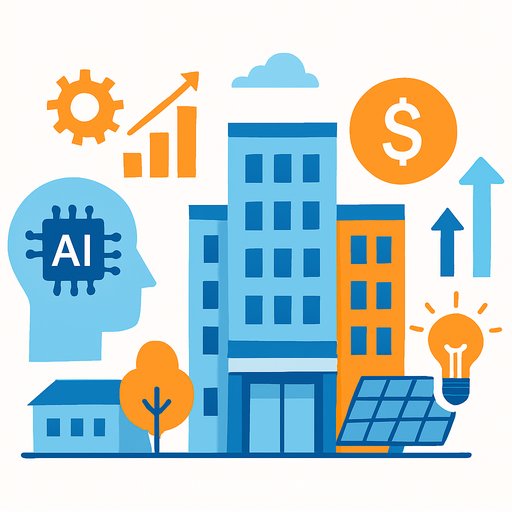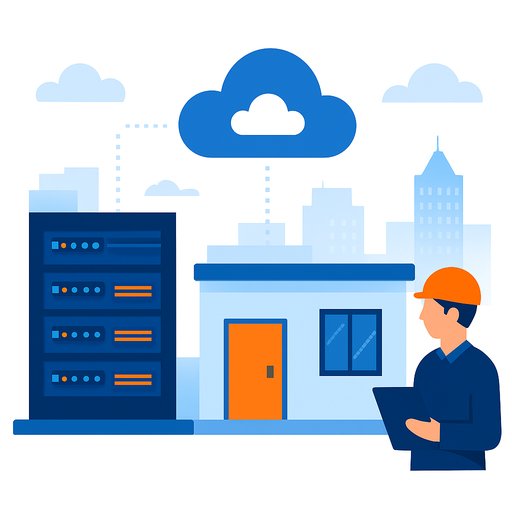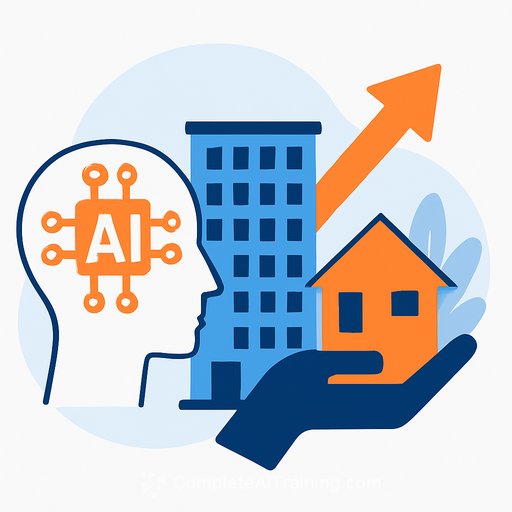AI Can Help Canadian CRE Owners Offset Tariff Pain-and Grow
Tariffs are squeezing Canadian commercial real estate from both sides-construction inputs and operating costs. A September 2025 Deloitte LLP report argues AI is a practical way to future-proof assets by improving building efficiency, leasing performance and tenant experience.
In Deloitte's survey of 100 owners: 60% reported higher construction and development costs, 57% saw supply chain delays, and 48% faced lower asset valuations. Tenant demand fell for 44%, while 40% experienced higher operating expenses.
Why AI matters now
"Artificial intelligence has already consumed everything there is to know in the internet. The next frontier is, how does it consume information about the built environment and how humans interact with that built environment?" said Tony Cocuzzo, Deloitte's Toronto-based national leader for investment management and real estate. "The real estate industry is in a unique position to be able to provide that kind of information."
Proof points from the field
- Energy optimization at scale: A retailer used AI to optimize HVAC across 600 stores (6.6 million sq. ft.). The system adjusted usage patterns, saving $1.38 million in electricity and increasing valuation by $24.5 million. "AI can correlate across building systems and synchronize capacity-ramp up when needed and reduce or shut off when it's not," said Cocuzzo.
- Leasing velocity and CRM automation: QuadReal Property Group is using AI to automate lead handling, tour booking and pre-qualification across a 10,000-unit portfolio. Results: 33% lift in tour-to-lease conversions, lower vacancy and higher rent capture. AI also supports deeper analytics on tenancy performance, tenant mix and maintenance planning.
The tariff hit, by the numbers
- 60%: Higher construction and development costs
- 57%: Supply chain delays
- 48%: Lower asset valuations
- 44%: Reduced tenant demand
- 40%: Higher operating expenses
A 90-day AI playbook for owners and operators
- Pick one building, one use case: Start where payback is clear-HVAC scheduling, demand response, or fault detection across key equipment.
- Integrate your systems: Connect BAS/BMS, meters, access control, work order systems and leasing CRM into a central data layer. Remove data silos first.
- Target fast savings: Use AI to align setpoints, occupancy schedules and weather forecasts. Identify anomalies (simultaneous heat/cool, short cycling, after-hours drift).
- Upgrade the leasing funnel: Automate lead intake, tour scheduling, pre-qualification and follow-up. Route high-intent leads to reps in minutes, not days.
- Tenant experience loop: Deploy chatbots for service requests, track response times, and push proactive communication. Tie satisfaction to renewal risk.
- Define ROI upfront: Baseline kWh/sq. ft., demand charges, runtime hours, work orders per 10k sq. ft., cost per lead, tour-to-lease, days vacant and rent uplift. Commit to monthly reporting.
- Set guardrails: Establish data ownership, privacy, cybersecurity and vendor SLAs. Require open APIs and export rights.
- Train your team: Give operators and leasing teams simple playbooks for prompts, workflows and exception handling. Upskill with focused courses and certifications.
Where AI delivers immediate value
- Opex: Energy optimization, predictive maintenance, automated work order triage.
- Revenue: Lead scoring, automated nurture, dynamic concessions and pricing tests, tenant mix analytics.
- Capex: Equipment life modeling, retrofit targeting, M&V for incentives.
- Risk: Vacancy alerts, renewal risk scores, budget variance warnings.
Tools and partners
- Energy and operations: AI layers on top of your BAS/BMS and metering stack to optimize setpoints, detect faults and forecast loads.
- Leasing and CRM: AI copilots inside your CRM to auto-qualify leads, schedule tours and enrich prospect data.
- Portfolio analytics: Centralize property, leasing, ops and financial data for asset-level and portfolio-level decisioning.
Trade outlook
With Canada-U.S. trade talks in flux, the tariff path is uncertain. Cocuzzo noted the "ebbs and flows" of discussions and that "the devil will be in the details" of any resolution. "I wish my crystal ball was better," he said.
The practical move: bank savings you control now-lower energy spend, higher conversions, quicker turns-so you can absorb shocks later.
Next steps
- Choose one asset and one measurable use case. Set a 12-week target and assign an owner.
- Require API access and clear data rights from any vendor. Insist on a before/after M&V plan.
- Share a simple scorecard with your asset and operations teams. Pay for outcomes, not promises.
For broader context on CRE trends and technology, see Deloitte's real estate insights here.
If your team needs a quick upskill path for AI workflows in operations and leasing, explore role-based programs at Complete AI Training.
Your membership also unlocks:






